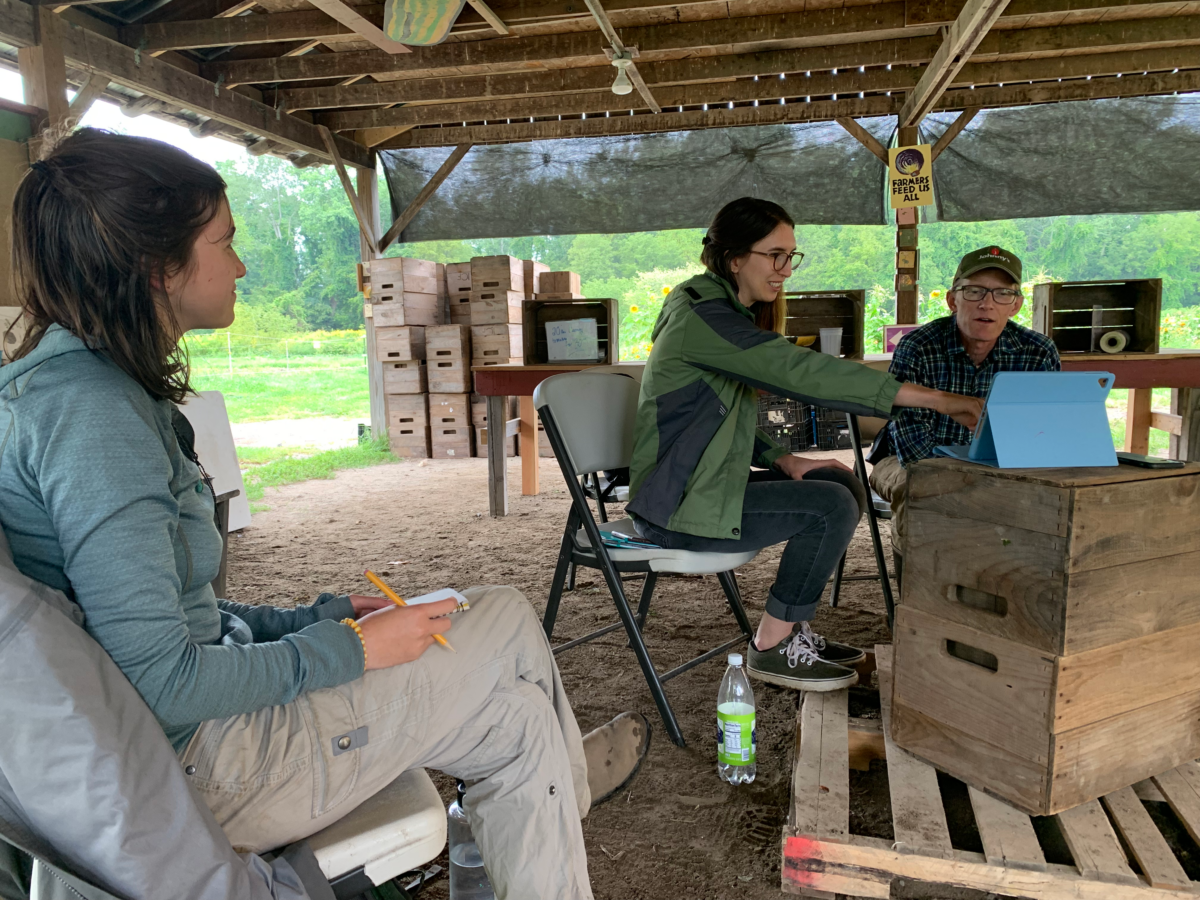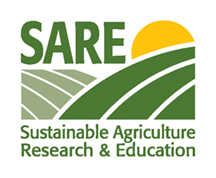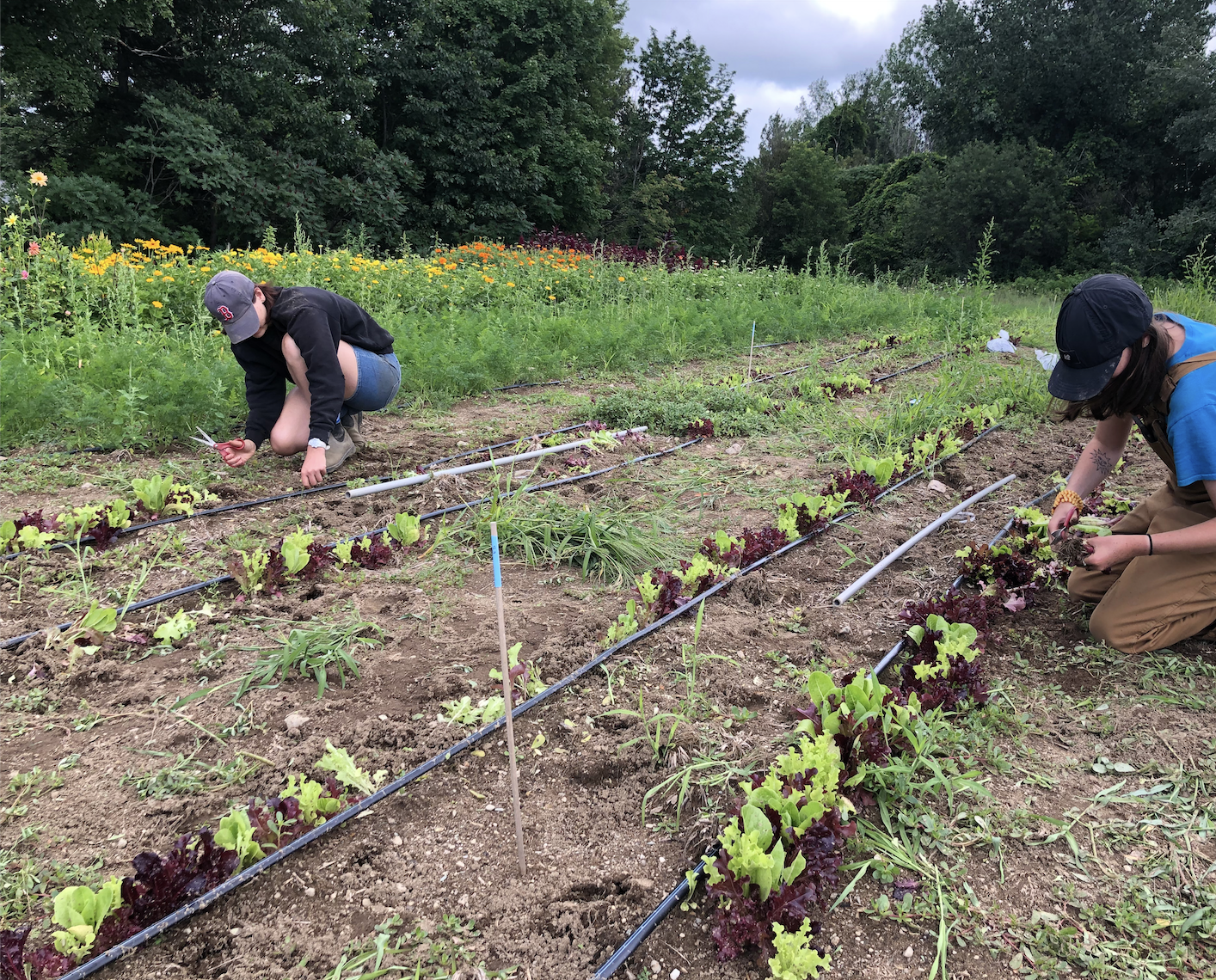
A Participatory Action Research study examines the pros and cons of silage tarping on yield and the biodiversity of below-ground organisms
Being a farmer is a very complex job; you have the economic side of things and also many ecological considerations. I believe a lot of farmers are interested in conservation but may not be aware of ecological groups like soil arthropods. Yes, some of them are pests, but most of them are beneficial and not everybody realizes that.”
—Dr. Eva Kinnebrew, Graduate Student Grantee
Soil Diversity is Often Overlooked as an Area of Conservation
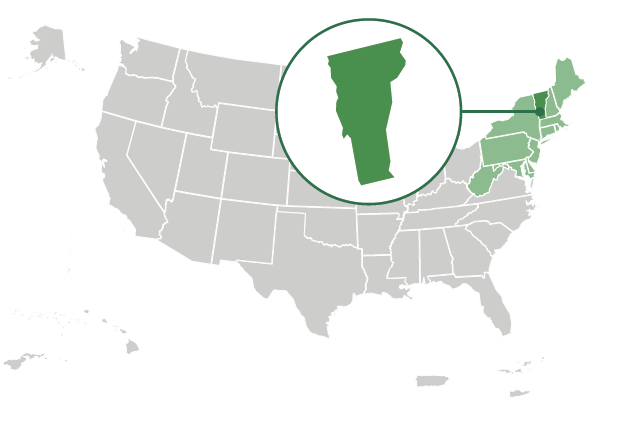
Region: Northeast
State: Vermont
Grant Type: Graduate Student
Grant: GNE19-205
SARE POST-PROJECT EVALUATION IMPACT MODEL
This evaluation impact model is specific to this SARE-funded project.
Sustainability Impacts
The project grantees and stakeholders contributed to the following sustainability impacts:
- Environmental sustainability impacts
- Production efficiency impacts
- Social sustainability impacts
Grantee Indicators
(Graduate Student)
Project grantees (defined above) achieved sustainability impacts by engaging with the following indicators through involvement with project activities:
- Increased knowledge/skills
- Increased capacity/motivation
- Increased engagement
- Practice change
- Career growth
Stakeholder Indicators
(Farmers, Mentees)
Project stakeholders (defined above) achieved sustainability impacts by engaging with the following indicators through involvement with project activities:
- Increased knowledge/skills
- Increased capacity/motivation
- Increased engagement
- Career growth
The Success Story
As a student at the University of Vermont, Dr. Eva Kinnebrew received a SARE Graduate Student grant and skillfully brought together agriculture, ecology, and farmer collaboration through Participatory Action Research (PAR). The PAR approach enabled her to explore the impact of silage tarps on crop yield and the biodiversity of below- ground organisms (arthropods) while partnering with farmers to determine their priorities and the usefulness of the research. Dr. Kinnebrew’s research on tarping resonates with the growing interest of small-scale farmers in sustainable alternatives to tilling and using herbicides to suppress weeds. Her findings offer farmers and decision-makers a comprehensive understanding of the positive and negative impacts of tarping on soil health. The results of this study were documented in multiple publications and shared at farmer conferences. Further, her involvement in a tarping-related community of practice produced a handbook, published by the University of Maine Cooperative Extension, to guide small farms on tarping best practices. Subsequently, Dr. Kinnebrew received a NIFA post-doctorate research fellowship at Colorado State University to explore water policies and the impacts of drought on farmers.
Presenting at the Vermont Vegetable and Berry Growers Association’s Annual Meeting felt very useful. It was great to have 10 minutes to present on tarping; 200 plus people attended. I think a lot of farmers tune into these annual meetings. Although many farmers are interested in tarps, they may not necessarily be thinking about below-ground biodiversity.”
—Dr. Eva Kinnebrew, Graduate Student Grantee
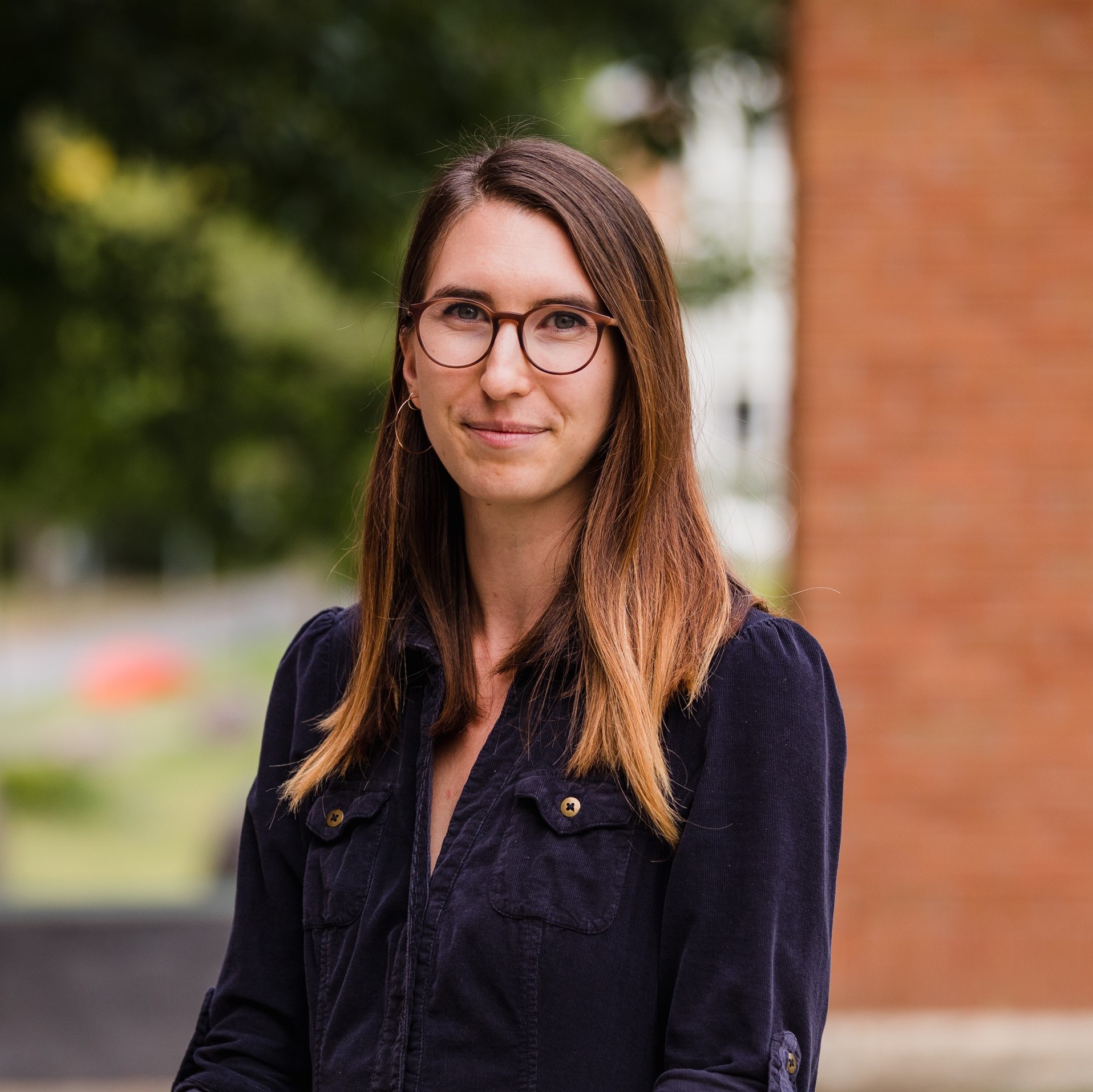
Grantee (Graduate Student) Highlights
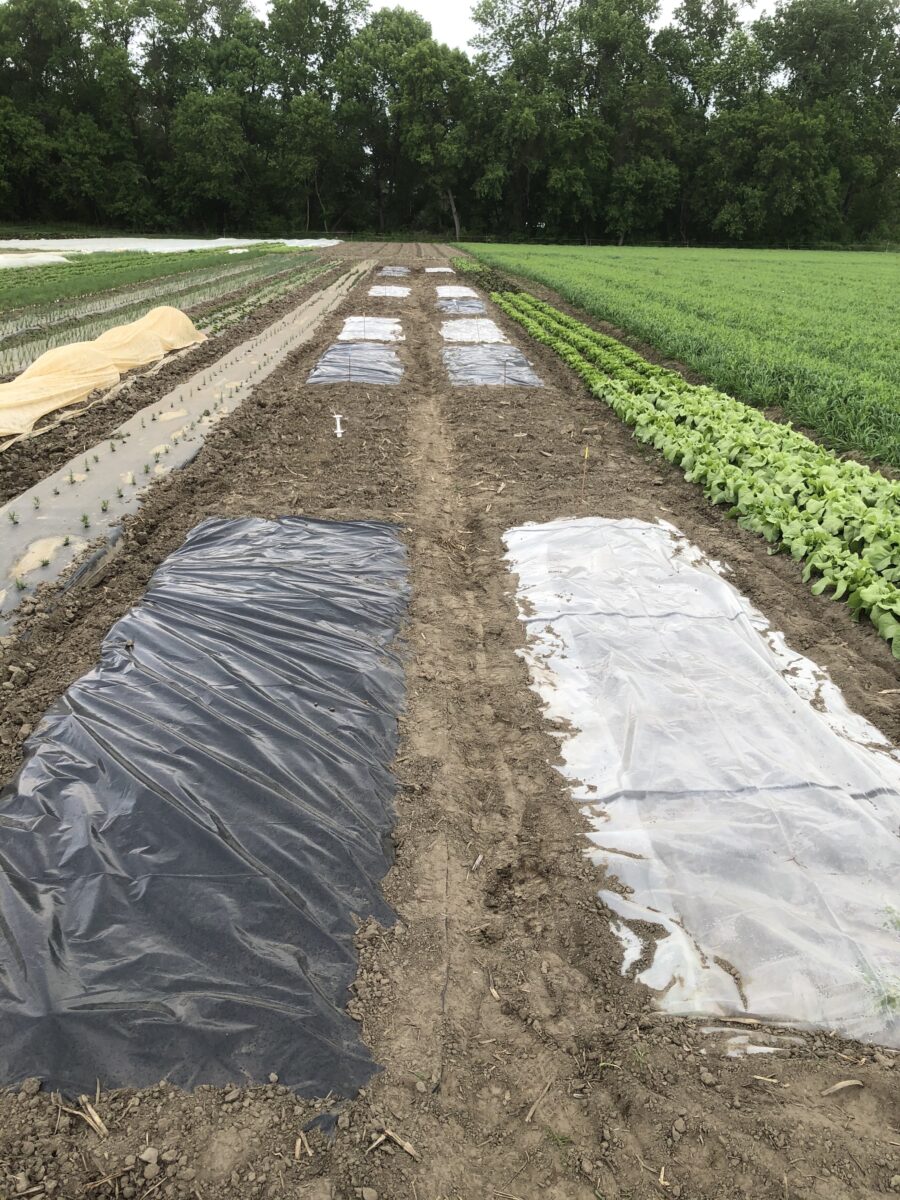
Credit: Eva Kinnebrew
The SARE Graduate Student grant catalyzed Dr. Kinnebrew’s sustainable agriculture trajectory. Farmers recognized the SARE name, which lent the project legitimacy and opened the door for farmer collaboration.
Kinnebrew’s novel research focus attracted farmers and other researchers eager to connect around a shared interest of tarping, including Drs. Sonja Birthisel, Suzanne Ishaq, and Alicyn Smart of the University of Maine and Dr. Natalie Lounsbury from the University of New Hampshire. This collaboration led to a successful proposal to the Northeastern Integrated Pest Management (IPM) Center for a working group focused on the impacts of tarping systems (Award received February 2020). This working group met multiple times in 2020 and 2021, bringing together around 20 researchers, farmers, and extension personnel to enhance knowledge, communications, and research on tarping systems in the Northeast. The impact rippled beyond academic circles with publications and presentations at farmer conferences and a handbook on tarping best practices for small farms.
Dr. Kinnebrew’s professional networks and collaboration with leading scientists, and the opportunity to mentor undergraduate students and collaborate with participating farmers, provided a solid foundation for her trajectory in academia. During the grant term, she learned to manage budgets, hire and mentor research assistants, and oversee research for the complete project cycle. The grant strengthened her ability to lead projects, analyze data, and communicate scientific results. She also received invaluable mentorship and guidance from Drs. Vic Izzo, V. Ernesto Méndez, and Gillian Galford. Both Dr.Izzo and Dr. Méndez are part of the Institute for Agroecology at the University of Vermont and not only advised Kinnebrew through the ecological and social dimensions of this project, but also connected her to a network of local farmers with whom this Institute has been collaborating for over a decade. Dr. Galford, Kinnebrew’s PhD advisor, offered crucial guidance on ecological sampling techniques and data analysis. Dr. Kinnebrew’s work led to publications in 2022 and 2023. Additionally, Dr. Kinnebrew’s SARE journey helped her secure a postdoctoral fellowship at Colorado State University where she continues to develop relationships with farmers using PAR principles. Currently, her research explores the impact of drought and water policies on small scale farmers, with special attention to Hispanic and Indigenous farmers whose livelihoods may be threatened by lack of access to water. She hopes that her results can help farmers negotiate and advance their water rights standings with local and federal governments.
.
Participatory Action Research Allows Researchers and Farmers to Co-Create Knowledge
A core principle of my grant was to interact with these farmers in a positive way using Participatory Action Research. Part of the grant funding went to paying the farmers. The grant also brought a sense of legitimacy to my project; farmers recognize the name SARE because SARE offers farmer grants as well. My project was really inspired by what the farmers were interested in, and the intersection of that with my own expertise. The interpretation of my data was a joint process with the farmers; a lot of knowledge points in my project were co-created with the farmers.”
—Dr. Eva Kinnebrew, Graduate Student Grantee
Other Stakeholder (Farmer, Mentees) Highlights
The research process actively engaged three partner farms. Farmer input was part of the research design process and Dr Kinnebrew designed experimental tarping treatments to represent how farmers use them. Through this, Dr. Kinnebrew increased the applicability and validity of her research to the farming community. Following conference presentations and one-on-one meetings with farmers, Dr. Kinnebrew received multiple emails requesting manuscripts and more information on the impacts and benefits of tarping.
Kinnebrew mentored two undergrad research assistants, Carlin Molander and Sophia Warren Wilcox, who gained valuable research experience that launched them on their educational and professional journeys. As well, Molander’s interest in interviewing the partner farmers led her to pursue funding through a University of Vermont undergraduate research office, which expanded the scope of the original research. Her grant writing experience became a steppingstone to a master’s program in Vermont, from which she recently graduated with a degree in Food and Agriculture Law and Policy. Warren Wilcox’s academic journey led her to a job with UVM Extension. Both have continued in agriculture-related research work.
We tried to ground this project in Participatory Action Research. Research can be very exploitative; but the framework of PAR tries to help researchers do research with the community, not on the community.”
—Dr. Eva Kinnebrew, Graduate Student Grantee
Collaborating With Farmers Results in More Equitable Outcomes
Sustainability Impacts
Environmental sustainability was a cornerstone of Kinnebrew’s SARE project. Many farmers and researchers are currently exploring alternatives to herbicides and tilling, which have negative impacts on soil and biodiversity. Tarping is being heralded as a viable alternative to these damaging practices, but, before this research, its impacts on soil biodiversity were not well tested. As well, farmers are in general much less familiar with soil biodiversity in comparison to other biological groups, like pollinators. Therefore, Dr. Kinnebrew saw this research as an opportunity to not only assess tarps’ sustainability, but also raise awareness around soil organisms, which play a key role in controlling pests and improving soil health. Dr. Kinnebrew’s research revealed that tarps dramatically reduced weed cover (around 30% weed cover in tarped plots versus 90% in control plots) and doubled crop yields. Kinnebrew’s project also shined a light on the impacts of tarps on soil arthropods. Tarping caused an immediate decline in surface-active species, like ants and beetles, but these communities quickly recovered after tarps were removed. The effects of tarps on soil-dwelling species, like springtails and millipedes, were more subtle, with some evidence of a slow progressive decline in their biodiversity in the weeks after tarps were removed. Tarps’ negative impacts were not as significant as Kinnebrew had anticipated, and these results may show some promise in the sustainability of this practice. However, Kinnebrew stresses the need for further research to understand tarps’ effects more fully, especially in comparison to other practices and after many years of continuous tarp use. Dr. Kinnebrew’s research also signals that tarping may be more effective on some farms than others due to environmental conditions.
In addition to conservation, this SARE project places a strong emphasis on social sustainability. A PAR approach recognizes the invaluable role of farmers in co-creating research questions and interpreting data, ensuring that the knowledge generated is a joint product of researchers and the community. PAR has the potential to increase buy-in from farmers in farmer-informed conservation research in the future.
I have learned an incredible amount about sustainable agriculture systems in the Northeast. Most notably, I gained a huge appreciation for the farmers and extension personnel who mix innovation, skill, and their own research to ensure food production for their community, especially as they do this in the midst of changing climates and increasingly aggressive pests and diseases."
—Dr. Eva Kinnebrew, Graduate Student Grantee
Collaborative Efforts Lead to Optimal Outcomes
